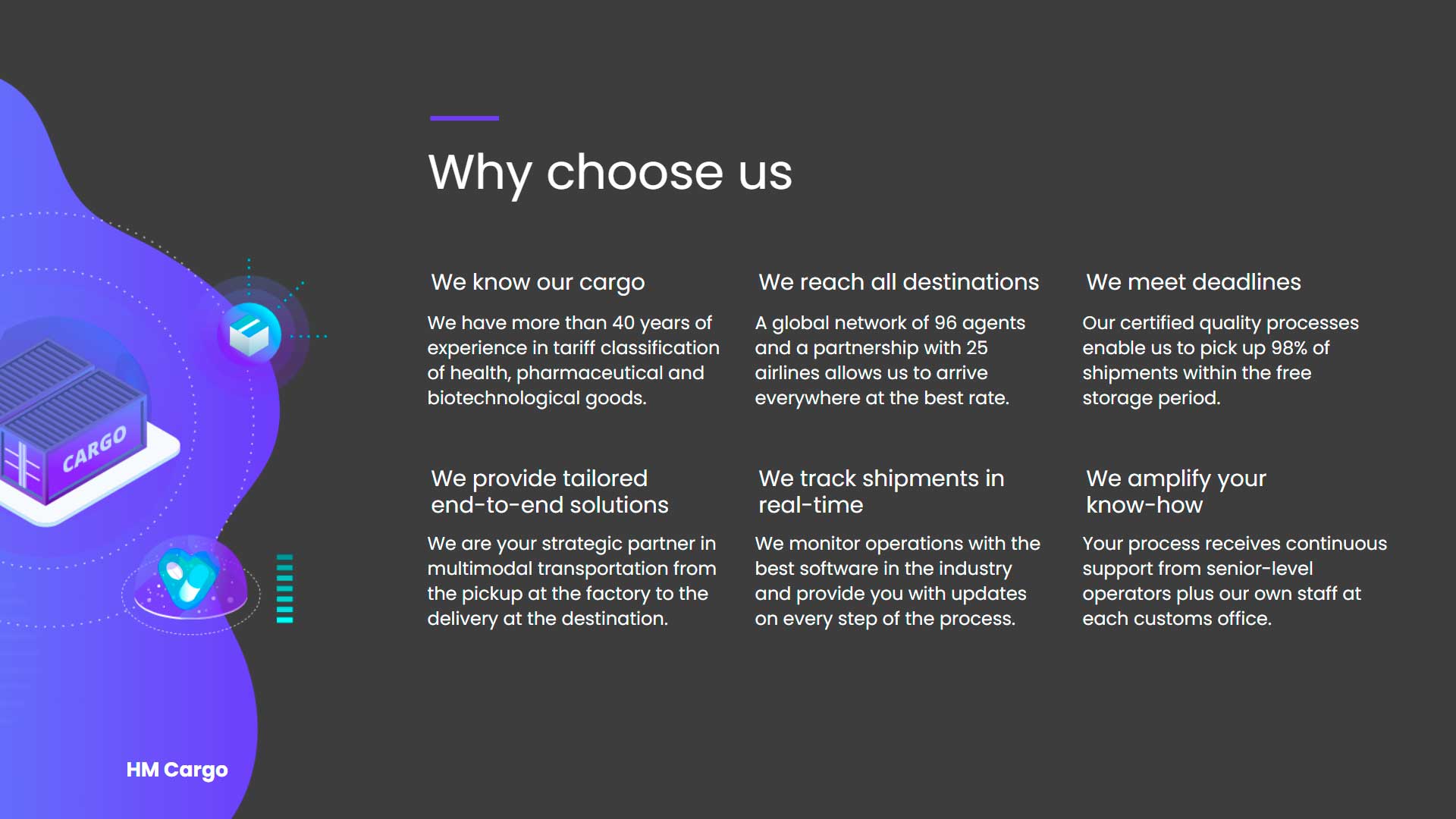Case study
We helped HM Cargo understand their buyers better and develop more relevant messaging for their email campaigns.
HM Cargo expanded their Business Dev team and were looking for growth opportunities. Despite their outreach efforts, they weren’t getting replies to their emails, and sales reps were frustrated. The CMO’s hypothesis was that the messaging wasn’t working.
We researched HM Cargo’s buyers’ core needs and motivations by:
We complemented this research with a messaging analysis of HM Cargo’s direct competitors and global industry leaders to identify positioning opportunities.
We found that the existing messaging wasn’t aligned with the buyers’ pain points or expectations. Outreach campaigns were transactional and price-focused, while HM Cargo’s most valuable clients were mature companies concerned with process optimization and data visibility, not price.
Based on the research, we created data-informed personas and redefined the company’s value proposition. We documented the findings in a messaging playbook with key messages and email templates for the Sales team.
As a result, email reply rates improved, and reps reported feeling less frustrated.

When trying to improve messaging, many marketing and sales teams default to a brute-force approach: they write a message that seems “good enough” and start testing and iterating until conversions improve.
This approach is cheap, fast, and easy, but in high-stakes B2B services, it has hidden costs. Sending the wrong message risks burning a bridge not just with one contact, but with an entire company. And a bad message that does get a response wastes your reps’ time in the wrong conversation.
The most efficient way to improve messaging is also the most obvious: talk to your best customers. Listen to what they value and why they chose you. Then use those insights to create human-centered content.
Good messaging is just your value prop in action.
